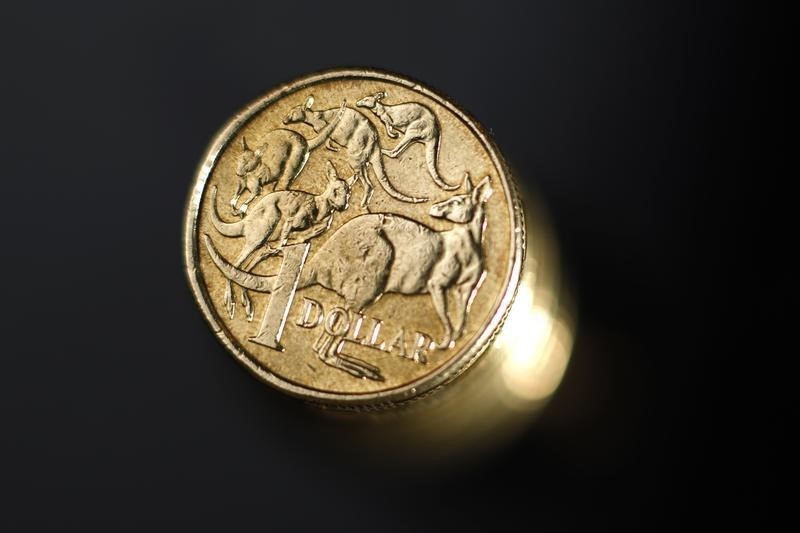Investing.com - The Australian dollar kept gains in Asia on Monday as investors awaited the Caixin manufacturing PMI tomorrow to cap off a busy data day in Asia.
AUD/USD traded at 0.7614, up 0.16%, while USD/JPY changed hands at 106.50, up 0.05%.
On Tuesday, comes the closely-watched Caixin manufacturing PMI for April, which last came in at 49.7.
Earlier on Monday, the NAB business confidence came in at plus-5, compared to plus-6 in March, and the business survey came in at plus-9, from plus-12 in March.
The survey shows the economy is rebalancing towards the non-mining sector but exchange rate headwinds remain.
"However, subdued inflation pressures in the survey and a very weak CPI result for Q1 suggest the RBA has scope to further cement the non-mining recovery with an additional cut to the cash rate at tomorrow's (Tuesday) meeting, although it is likely to be a close call," NAB Chief Economist Alan Oster said.
Japan's manufacturing PMI for April came in at 48.2, a bove the 48.0 expected.
As well, Australia's AIG manufacturing index came in at 53.4. a sharp drop from last month's 58.1 level.
The Reserve Bank of Australia is due to meet Tuesday in what is expected to be a close decision expecting the cash rate to be left on hold. The case for a 25 basis point rate cut built last week after the first quarter consumer price index inflation surprised significantly to the downside.
"While margins remain tight, recovering domestic market share and building momentum in a variety of export markets provide a strong foundation for the lift in confidence required for the sector to move up another gear," AI Group Chief Executive Innes Willox said. "A budget that boosts incentives for business investment and innovation would come at just the right time for manufacturers to capitalize on recent gains."
At the weekend, the China April CFLP manuacturing index came in at 50.1, below expectations, but hanging onto expansion territory. The CFLP service PMI eased to 53.5 from 53.8.
The semi-official manufacturing PMI from the China Federation of Logistics and Purchasing and National Bureau of Statistics slid from the first over-50 reading in eight months in March.
On the positive side, this is still the second consecutive over-50 reading - the first time that's happened since the middle of last year. Although gauges
of output, new orders and export orders slipped marginally, they are still around the average of the past year.
The CFLP tried to downplay the slide in the manufacturing PMI, saying in an accompanying statement that "the stabilizing and recovering trend of the economy remains intact. The modest drop in the index is a normal fluctuation."
The U.S. dollar index, which measures the greenback’s strength against a trade-weighted basket of six major currencies, was down 0.13% to 92/90.
In the week ahead, investors will be turning their attention to Friday’s U.S. jobs report for April, with any changes to wage growth particularly in focus.
On Monday, financial markets in China, the U.K. and many other countries will be closed for a national holiday.
Last week, the dollar slumped to eight-month lows against a basket of its major peers on Friday as the yen continued to build on strong gains from earlier in the week, following central bank meetings in the U.S. and Japan.
Data on Thursday showed that the U.S. economy grew at the slowest rate in two years in the first quarter, with gross domestic product increasing just 0.5% from a year earlier.
Another report on Friday showed that both personal spending and the personal consumption expenditures price index, the Fed’s preferred inflation measure, ticked up 0.1% in March.
The single currency was boosted after data on Friday showed that the bloc’s economy grew at the fastest pace in five years in the first quarter, with GDP rising 0.6%, well ahead of expectations of 0.4% growth.
